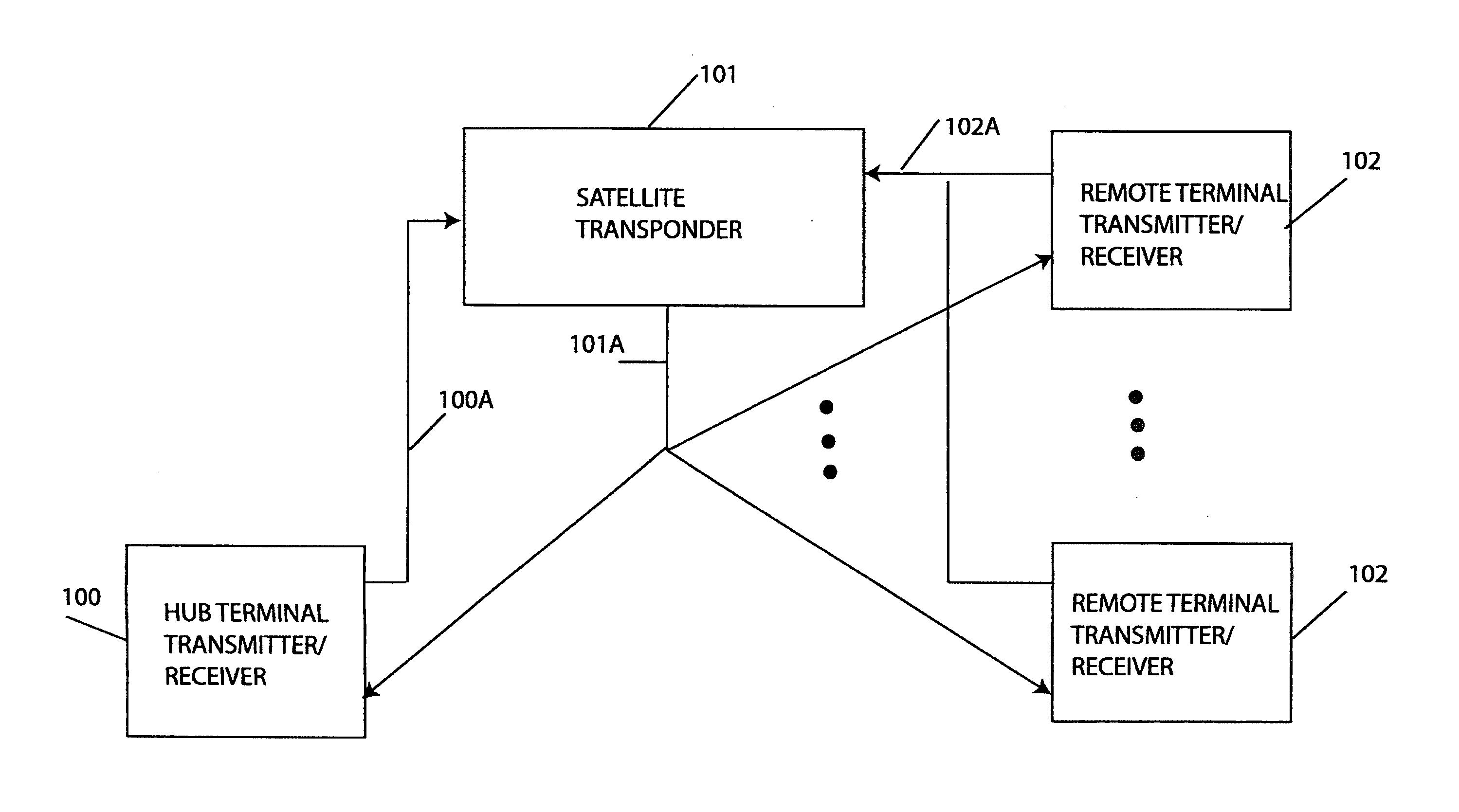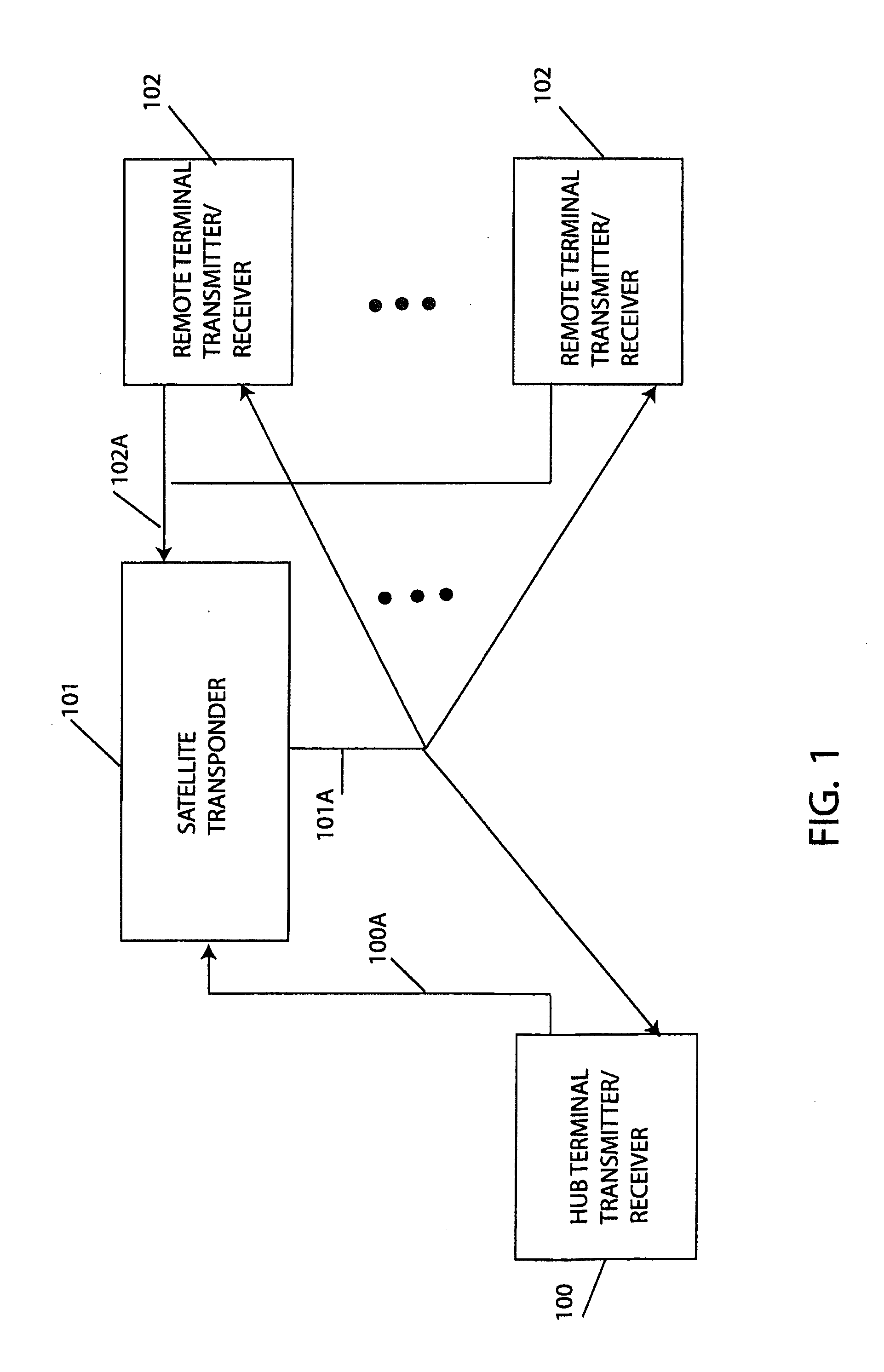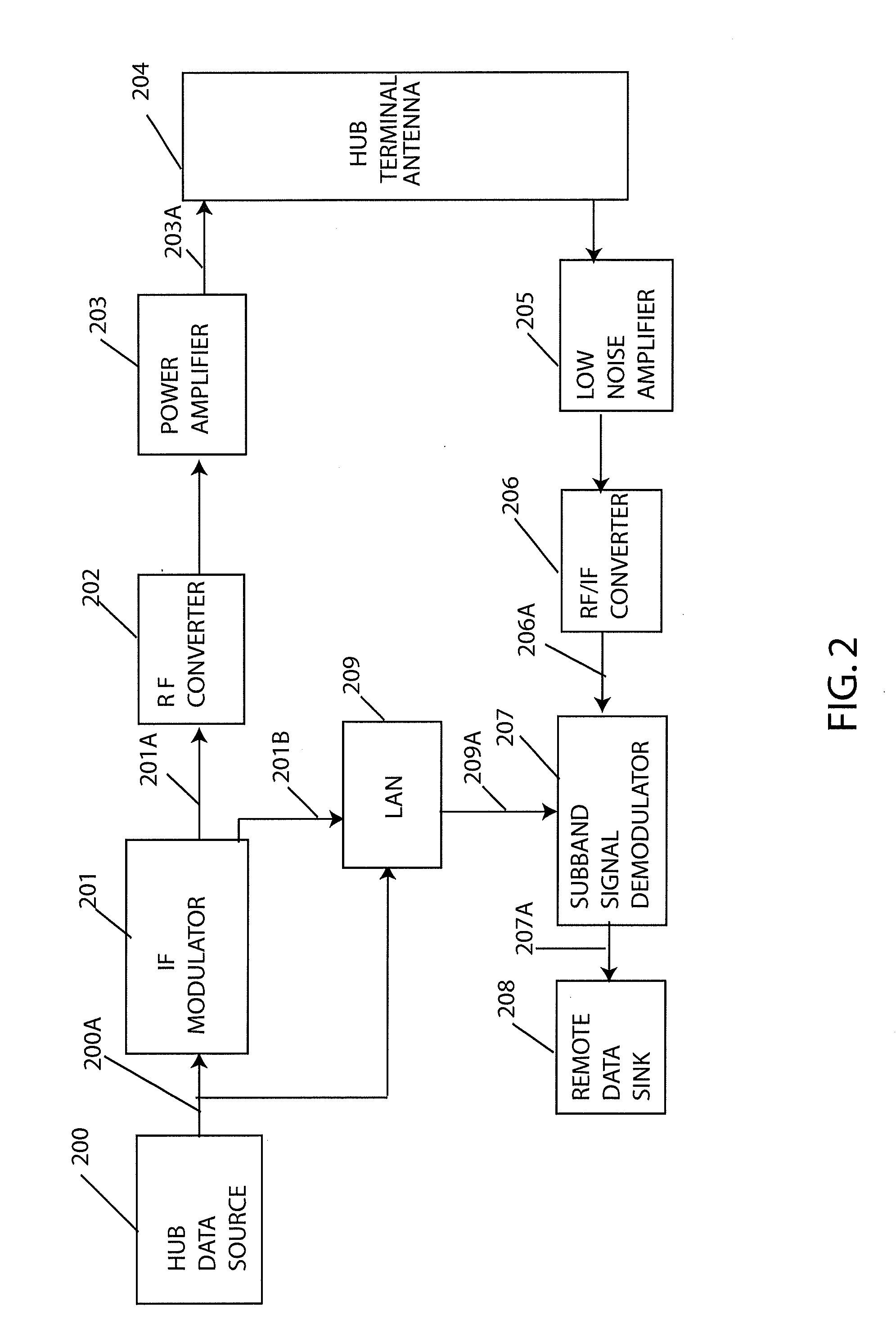Method and apparatus for subband signal demodulation in a transponder satellite communication link containing a component of relayed interference
a technology of relay interference and subband signal, which is applied in the direction of pulse manipulation, pulse monitoring, pulse technique, etc., can solve the problems of significant degrading of subsequent interference reduction, power addition to channel noise at the receiver, and errors in parameter measurement, so as to achieve large cancellation factor and large cancellation factor
- Summary
- Abstract
- Description
- Claims
- Application Information
AI Technical Summary
Benefits of technology
Problems solved by technology
Method used
Image
Examples
Embodiment Construction
[0022]In the above prior art systems techniques the demodulation of a remote-terminal signal in a point-to-multipoint satellite application are not disclosed and the interference cancellation is broadband in that it includes all of the remote terminal signals in the bandwidth occupied by a wideband hub interference signal. The larger the bandwidth the more difficult it is to achieve a large interference cancellation (on the order of 45 dB) in the presence of link parameter variations. Consequently, a technique that performs the interference cancellation in the smaller bandwidth corresponding to the frequency subband of the remote-terminal signal has potential to provide improved interference discrimination. Further the technique of simultaneously performing interference cancellation and remote-terminal signal demodulation allows for the use of optimum filtering against noise to reduce dynamic range requirements and provide superior demodulation performance. This approach requires a ...
PUM
 Login to View More
Login to View More Abstract
Description
Claims
Application Information
 Login to View More
Login to View More - R&D
- Intellectual Property
- Life Sciences
- Materials
- Tech Scout
- Unparalleled Data Quality
- Higher Quality Content
- 60% Fewer Hallucinations
Browse by: Latest US Patents, China's latest patents, Technical Efficacy Thesaurus, Application Domain, Technology Topic, Popular Technical Reports.
© 2025 PatSnap. All rights reserved.Legal|Privacy policy|Modern Slavery Act Transparency Statement|Sitemap|About US| Contact US: help@patsnap.com



